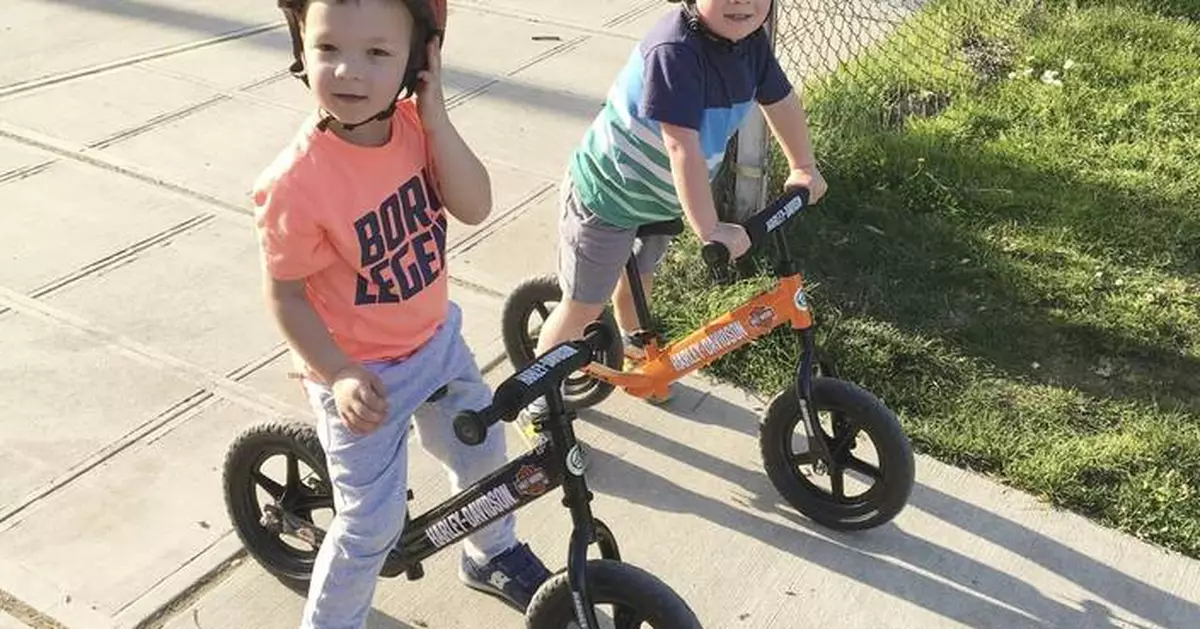When Michael Natividad learned to ride a bike at 7 or 8 years old, he knew his training wheels were ready to come off when he leaned on them while zipping around corners.
His daughter, on the other hand, was barely 3 when she sped away from him on her tiny bicycle, he said, admitting to feeling a bit robbed of a special moment.
“I kept thinking of that opportunity holding her up, but I did it for all of maybe one minute,” said Natividad, of Rohnert Park, California. “I was looking forward to that for three years.”
A big difference was that Loralani, now 4, never used training wheels. Instead, like an increasing number of children, she had learned to ride a balance bike first, at around 2.
Balance bikes look like miniature bicycles without pedals. An adjustable seat can be lowered for children to put their feet on the ground. Some models come with attachable pedals, so kids can use them as their first real bike when ready.
Now, as some companies market balance bikes for children as young as 8 months old, the question is, at what age should kids learn to ride a bike?
Annie Pezalla, a professor of human development at Macalester College in St. Paul, Minnesota, said the 8-month marker “raised my eyebrows” but she saw the logic behind the claim. That’s because the part of the brain largely responsible for coordination, the cerebellum, goes through a huge growth spurt from about 6 to 8 months.
Still, Pezalla recommended caution. Rather than a particular age, she said, it is more important to consider milestones that occur at different times for different children, such as holding their head up on their own and taking a few steps while grasping onto something.
“Once those milestones have been reached, then I think it’s the perfect time to get on one of those balance bikes,” she said, noting they usually happen between 9 and 18 months.
She added the caveat that early attempts should be made in a very safe space, like a carpeted room.
Pezalla said training wheels are going out of style because they don’t teach proprioception, the body's ability to understand where it is in space. It's what allows one, for example, to walk without thinking about each step. So when training wheels come off, kids have to relearn how to balance.
Research also shows that children who start with balance bikes get a leg up, said Cristiana Mercê, a sport sciences professor at Santarém Polytechnic University in Portugal. Over five studies published on balance bikes, Mercê and her team have demonstrated that balance-bike users learn to ride regular bikes in less time, and up to two years younger, than peers using training wheels.
Bikes with training wheels are too large for most young children. Balance bikes offer the chance to explore many behaviors that training wheels don’t, such as pushing with both feet, one foot, and gliding without pedaling, she said.
The variety of movements makes it easier to transition to a traditional bicycle, Mercê said. “You can balance without pedaling, but you can’t pedal without balancing.”
The American Academy of Pediatrics’ bicycle guidance doesn’t specify an age, instead saying most kids learn to ride at their own pace between 4 and 7. It explicitly warns against “purchasing a larger bike for the child to ‘grow into.'”
But the guidance hasn’t been updated since 2011, years before balance bikes became more popular.
Deferring to the AAP’s age range, Pezalla said the transition to a pedal bike will probably occur as a natural progression with little instruction. At first, children straddle and walk with the balance bike, then sit and walk and finally, run, sit and glide.
“It should go in stages with no expectation that, gosh, an 8 month old is going to be gliding on this thing,” she said.
After that, the gap between gliding and pedaling is negligible, Pezalla said, noting that she wishes she would have known to teach her 10-year-old twin boys to ride with balance bikes. Learning these motor skills early conveys several benefits that transcend a new way to get around.
“It represents a deal of independence and self-confidence in a way that’s not possible any other way,” she said. “And I think teaching kids how to ride a bike earlier has all sorts of benefits, not only to their coordination, their balance, but their sense of self-confidence and agency as well.”
EDITOR’S NOTE: Albert Stumm writes about food, travel and wellness. Find his work at https://www.albertstumm.com

FILE - A child wearing a mask pushes his bike during a quiet day at the East Lake Park in Wuhan in central China's Hubei province, April 2, 2020. Miniature bikes with no pedals seem to be everywhere these days, and the kids riding them are getting younger and younger. Experts recommend starting with those so-called balance bikes at a younger-than-expected age, possibly even less than a year old. (AP Photo/Ng Han Guan, File)
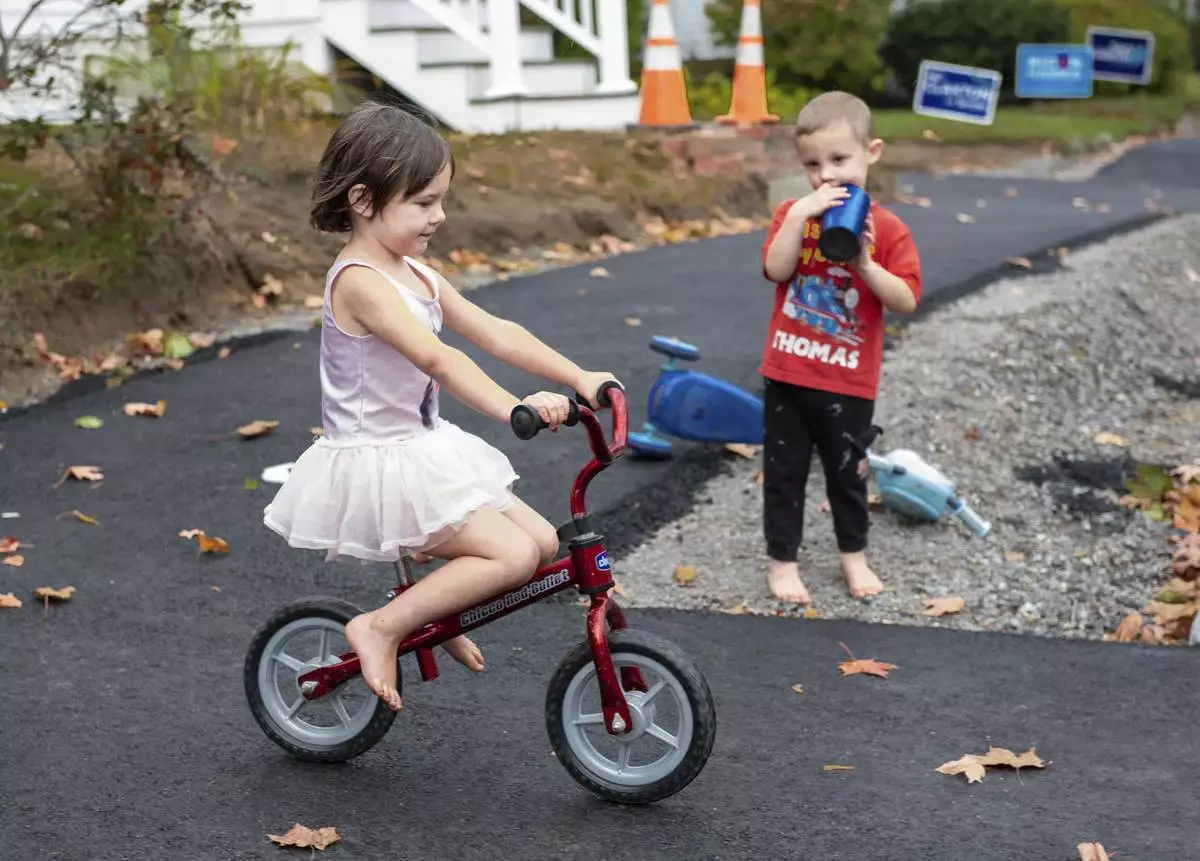
FILE - Raven Kephart, left, rides her bike down a small hill as her little brother, Teagan, looks on, Oct. 7, 2020, in Auburn, Maine. Miniature bikes with no pedals seem to be everywhere these days, and the kids riding them are getting younger and younger. Experts recommend starting with those so-called balance bikes at a younger-than-expected age, possibly even less than a year old. (Andree Kehn/Sun Journal via AP, File)
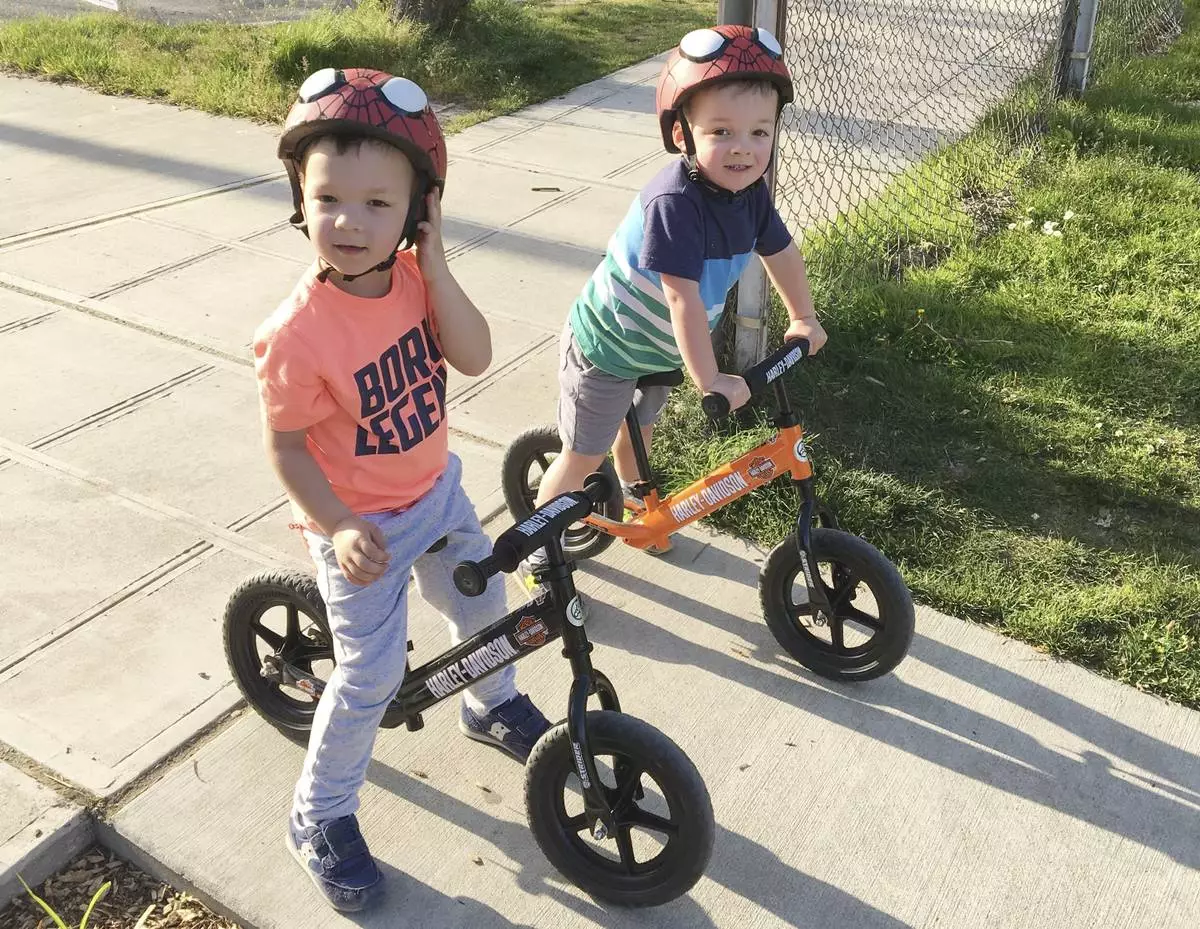
Jackson, left, and Owen Pezalla, both 4, appear on balance bicycles in Seattle on July 1, 2017. Experts recommend starting with those so-called balance bikes at a younger-than-expected age, possibly even less than a year old. (Annie Pezalla via AP)
KATHMANDU, Nepal (AP) — The highest camp on the world’s tallest mountain is littered with garbage that is going to take years to clean up, according to a Sherpa who led a team that worked to clear trash and dig up dead bodies frozen for years near Mount Everest’s peak.
The Nepal government-funded team of soldiers and Sherpas removed 11 tons (24,000 pounds) of garbage, four dead bodies and a skeleton from Everest during this year's climbing season.
Ang Babu Sherpa, who led the team of Sherpas, said there could be as much as 40-50 tons (88,000-110,000 pounds) of garbage still at South Col, the last camp before climbers make their attempt on the summit.
“The garbage left there was mostly old tents, some food packaging and gas cartridges, oxygen bottles, tent packs, and ropes used for climbing and tying up tents,” he said, adding that the garbage is in layers and frozen at the 8,000-meter (26,400-foot) altitude where the South Col camp is located.
Since the peak was first conquered in 1953, thousands of climbers have scaled it and many have left behind more than just their footprints.
In recent years, a government requirement that climbers bring back their garbage or lose their deposits, along with increased awareness among climbers about the environment, have significantly reduced the amount of garbage left behind. However, that was not the case in earlier decades.
“Most of the garbage is from older expeditions,” Ang Babu said.
The Sherpas on the team collected garbage and bodies from the higher-attitude areas, while the soldiers worked at lower levels and the base camp area for weeks during the popular spring climbing season, when weather conditions are more favorable.
Ang Babu said the weather was a big challenge for their work in the South Col area, where oxygen levels are about one-third the normal amount, winds can quickly turn to blizzard conditions and temperatures plunge.
“We had to wait for good weather when the sun would melt the ice cover. But waiting a long time in that attitude and conditions is just not possible,” he said. “It's difficult to stay for long with the oxygen level very low.”
Digging out the garbage is also a big task, since it is frozen inside ice and breaking the blocks is not easy.
It took two days to dig out one body near the South Col which was frozen in a standing position deep in the ice, he said. Part way through, the team had to retreat to lower camps because of the deteriorating weather, and then resume after it improved.
Another body was much higher up at 8,400 meters (27,720 feet) and it took 18 hours to drag it to Camp 2, where a helicopter picked it up.
The bodies were flown to Tribhuvan University Teaching Hospital in Kathmandu for identification.
Of the 11 tons of garbage removed, three tons of decomposable items were taken to villages near Everest's base and the remaining eight were carried by porters and yaks and then taken by trucks to Kathmandu. There it was sorted for recycling at a facility operated by Agni Ventures, an agency that manages recyclable waste.
“The oldest waste we received was from 1957, and that was rechargeable batteries for torch lights,” said Sushil Khadga of the agency.
Why do climbers leave garbage behind?
"At that high altitude, life is very difficult and oxygen is very low. So climbers and their helpers are more focused on saving themselves," Khadga said.
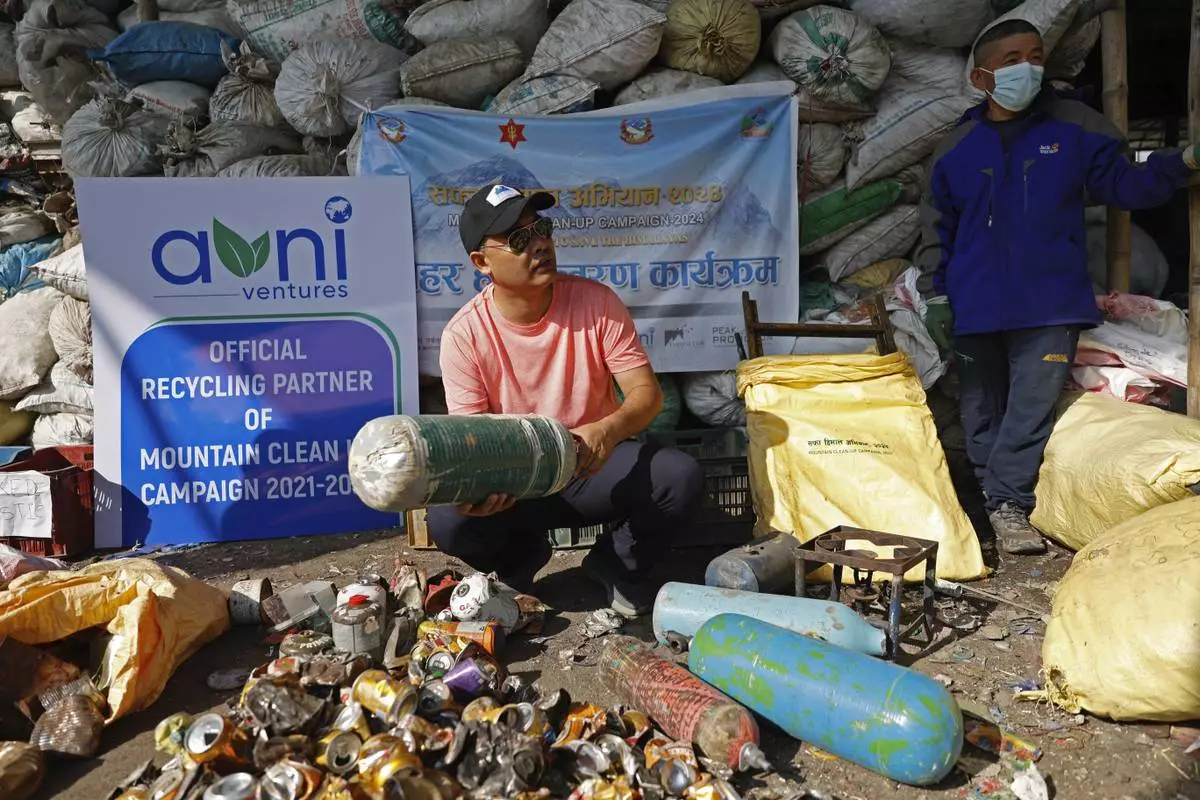
Sushil Khadga of the Agni Ventures, an agency that manages recyclable waste, checks an used oxygen cylinder collected en route Mount Everest before it is recycled at the facility, in Kathmandu, Nepal, Monday, June 24, 2024. The highest camp on the world's tallest mountain is littered with garbage that is going to take years to clean up, according to a Sherpa who led a team that worked to clear trash and dig up dead bodies frozen for years near Mount Everest's peak. (AP Photo/Sanjog Manandhar)
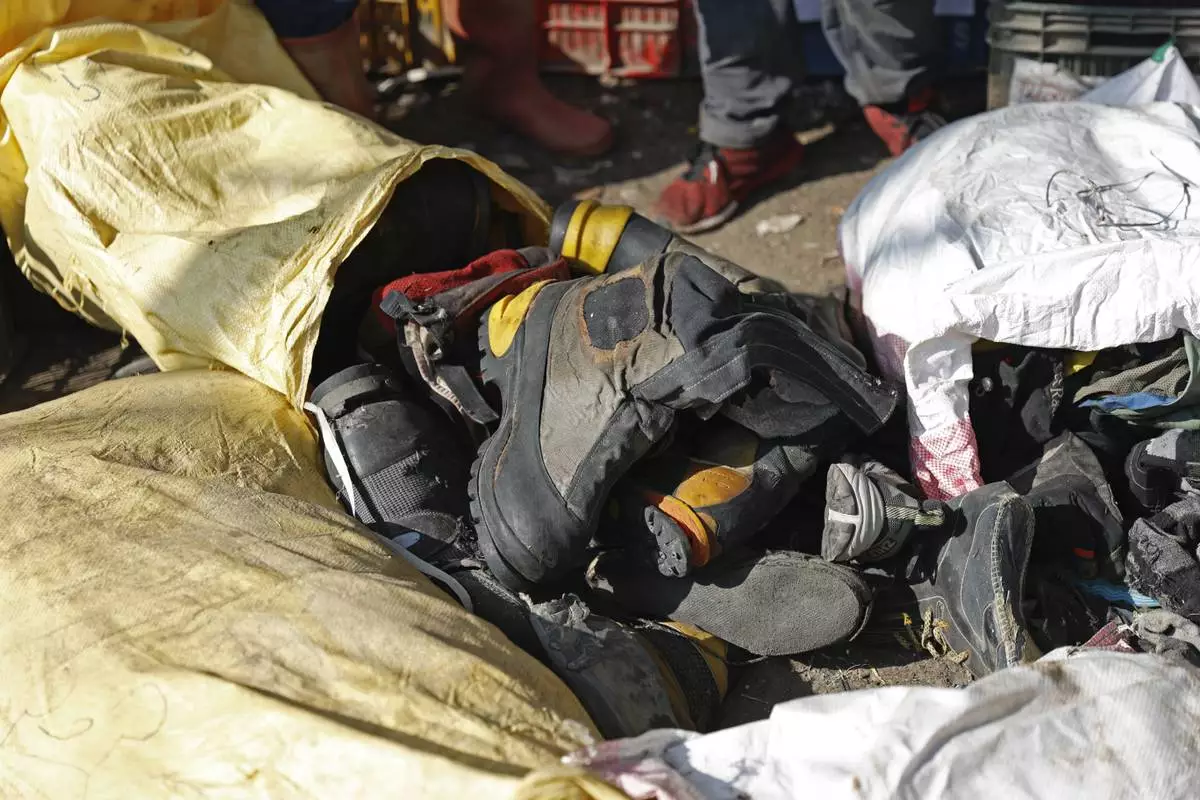
Shoes and other garbage collected en route Mount Everest is piled before it is sorted for recycling at a facility operated by Agni Ventures, an agency that manages recyclable waste, in Kathmandu, Nepal, Monday, June 24, 2024. The highest camp on the world's tallest mountain is littered with garbage that is going to take years to clean up, according to a Sherpa who led a team that worked to clear trash and dig up dead bodies frozen for years near Mount Everest's peak. (AP Photo/Sanjog Manandhar)

This image provided by the Peak Promotion shows the body of a climber that had been frozen for years before it was removed from the Everest region, Nepal, Monday, May 13, 2024. In the seven decades since Mount Everest was first conquered, thousands of climbers have scaled the peak, and many have left behind more than just their footprints. Tons of trash and several bodies remain on the icy slopes of the world's highest mountain. (Peak Promotion via AP)
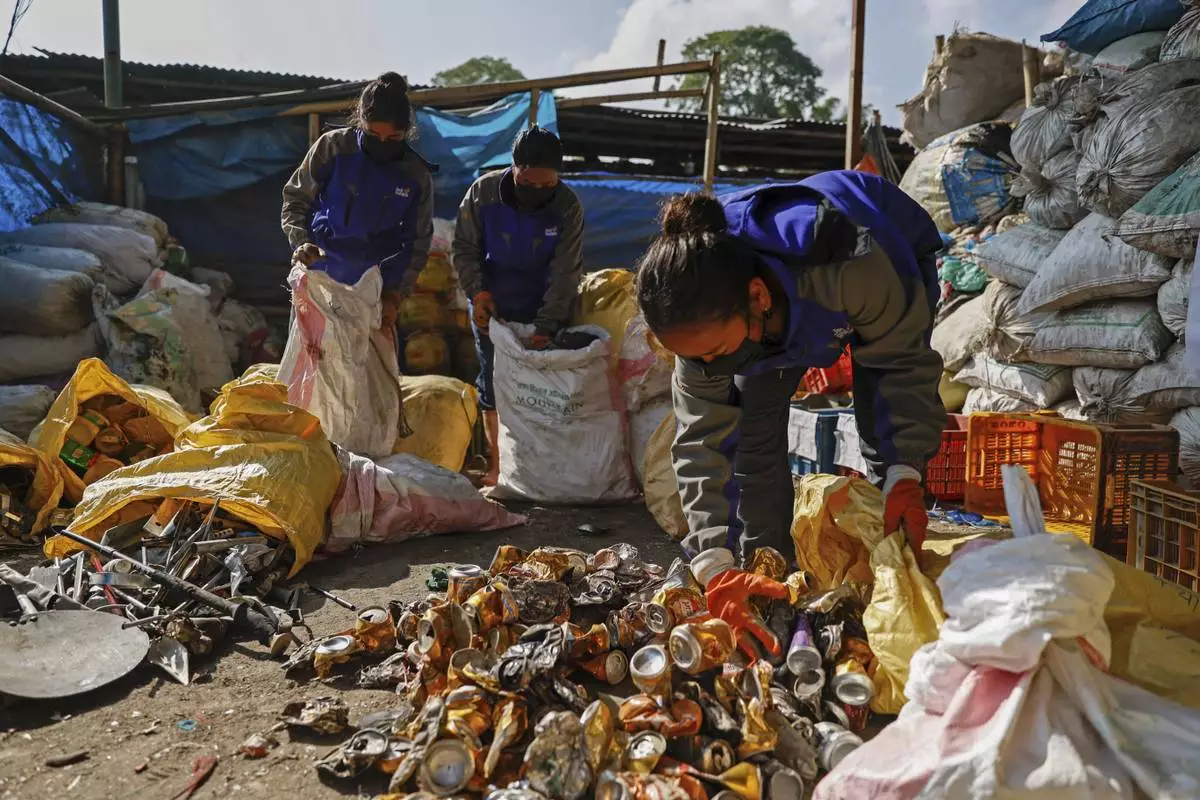
Workers segregate the garbage collected en route Mount Everest, at a facility operated by Agni Ventures, an agency that manages recyclable waste, in Kathmandu, Nepal, Monday, June 24, 2024. The Nepal government-funded team of soldiers and Sherpas removed 11 tons (24,000 pounds) of garbage, four dead bodies and a skeleton from Everest during this year's climbing season. (AP Photo/Sanjog Manandhar)

Ang Babu Sherpa, who led the team of Sherpas cleaning the trash from the high altitude camps of Mount Everest speaks to the Associated Press in Kathmandu, Nepal, Thursday, June 20, 2024. Ang Babu said the weather was a big challenge for their work in the South Col area, where oxygen levels are about one-third the normal amount, winds can quickly turn to blizzard conditions and temperatures plunge. (AP Photo/Sanjog Manandhar)

Sacks of garbage collected en route Mount Everest are piled before recycling at a facility operated by Agni Ventures, an agency that manages recyclable waste, in Kathmandu, Nepal, Monday, June 24, 2024. The highest camp on the world's tallest mountain is littered with garbage that is going to take years to clean up, according to a Sherpa who led a team that worked to clear trash and dig up dead bodies frozen for years near Mount Everest's peak. (AP Photo/Sanjog Manandhar)
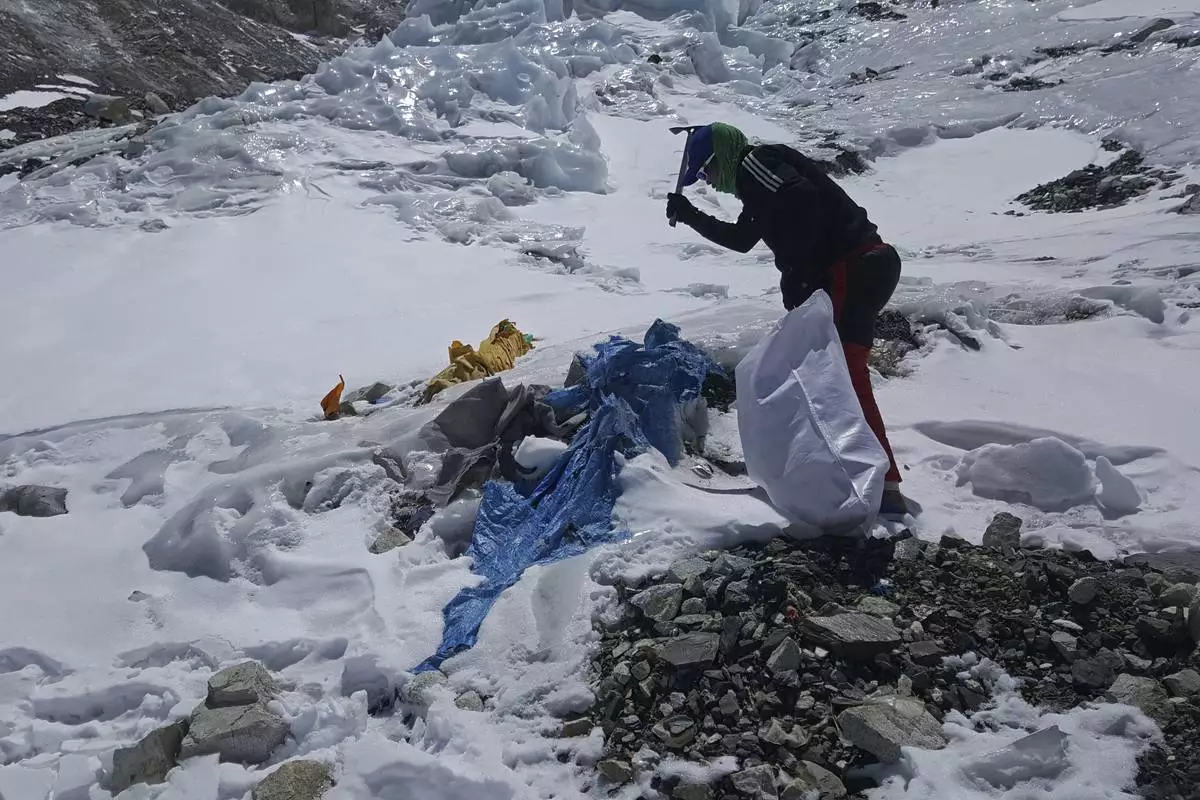
This image provided by the Peak Promotion shows a member of the Nepal government-funded team using a spade to remove frozen trash en route the Mount Everest, Nepal, Tuesday, April 27, 2021. In the seven decades since Mount Everest was first conquered, thousands of climbers have scaled the peak, and many have left behind more than just their footprints. Tons of trash and several bodies remain on the icy slopes of the world's highest mountain. (Peak Promotion via AP)
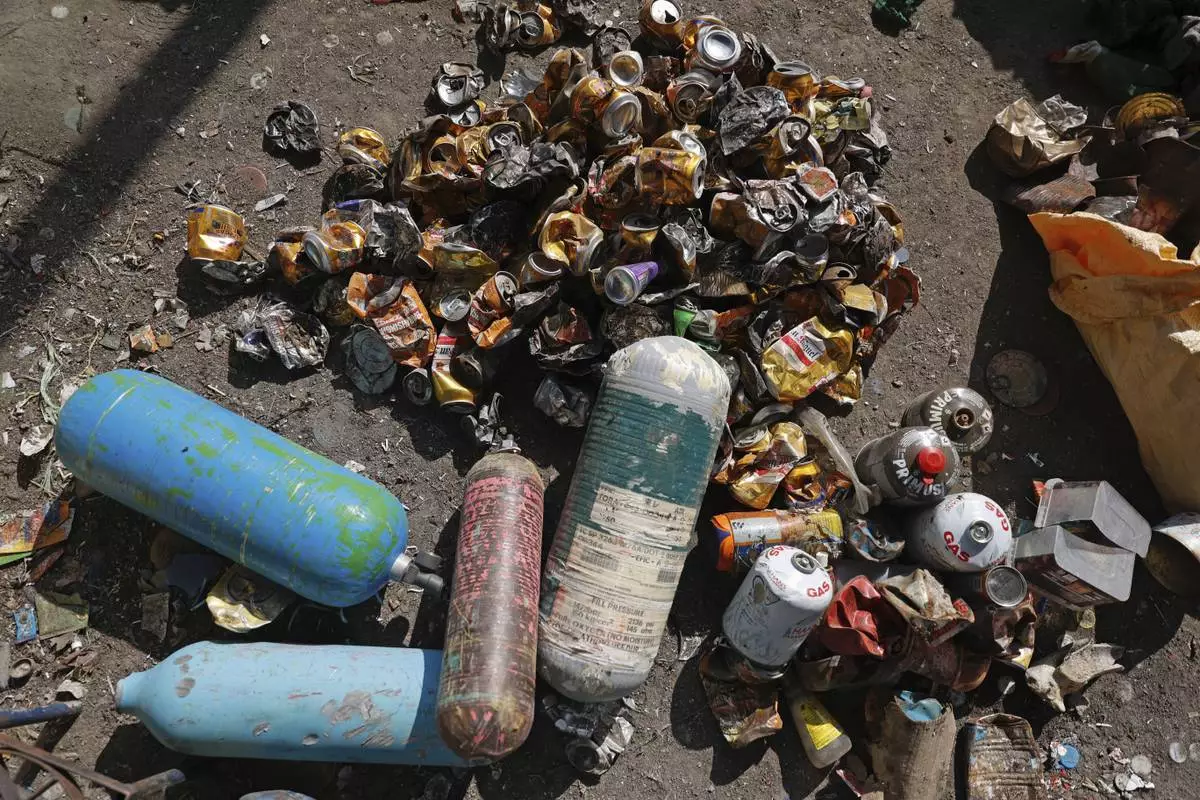
Used oxygen cylinders and beer cans collected en route Mount Everest lie at a facility operated by Agni Ventures, an agency that manages recyclable waste, in Kathmandu, Nepal, Monday, June 24, 2024. The highest camp on the world's tallest mountain is littered with garbage that is going to take years to clean up, according to a Sherpa who led a team that worked to clear trash and dig up dead bodies frozen for years near Mount Everest's peak. (AP Photo/Sanjog Manandhar)
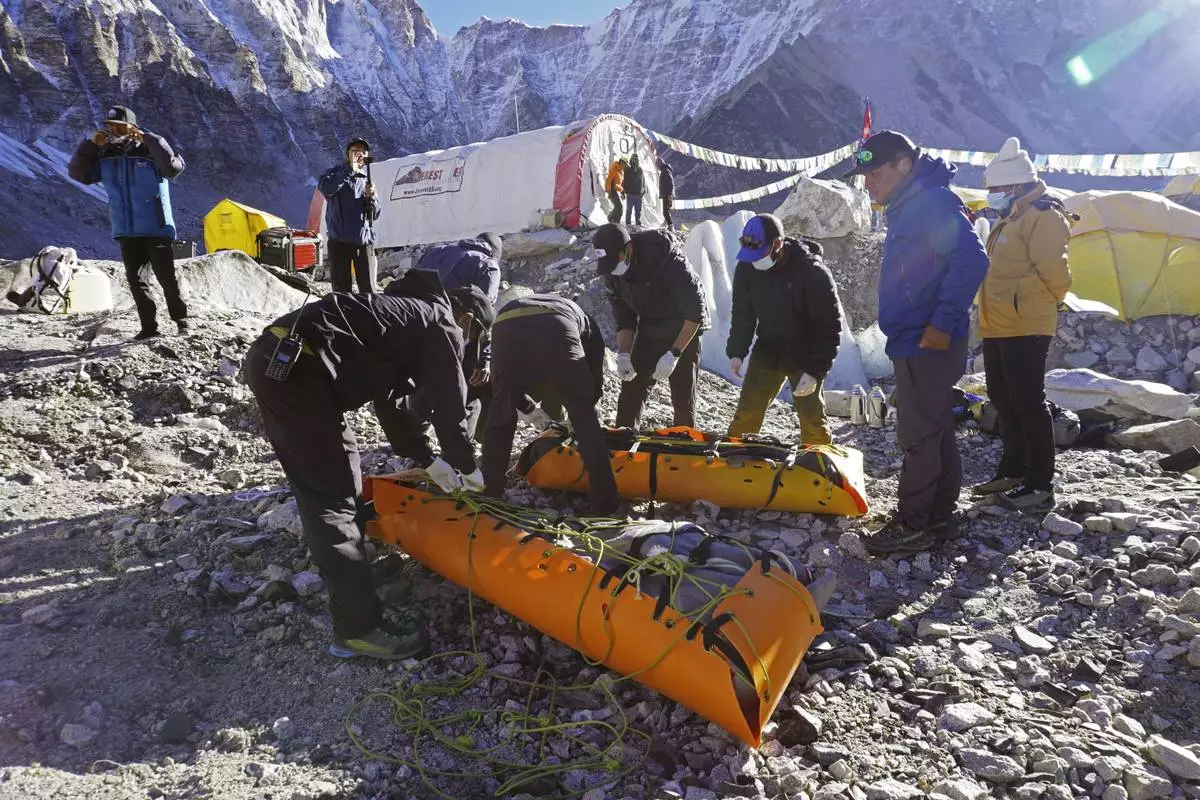
This image provided by the Peak Promotion shows recovered bodies of climbers being prepared to be airlifted from Everest base camp in Nepal, Wednesday, May 29, 2024. The Nepal government-funded team of soldiers and Sherpas removed 11 tons (24,000 pounds) of garbage, four dead bodies and a skeleton from Everest during this year's climbing season. (Peak Promotion via AP)

Garbage collected en route Mount Everest is piled before it is sorted for recycling at a facility operated by Agni Ventures, an agency that manages recyclable waste, in Kathmandu, Nepal, Monday, June 24, 2024. The highest camp on the world's tallest mountain is littered with garbage that is going to take years to clean up, according to a Sherpa who led a team that worked to clear trash and dig up dead bodies frozen for years near Mount Everest's peak. (AP Photo/Sanjog Manandhar)





